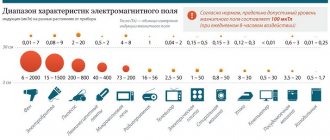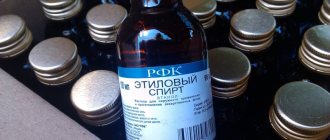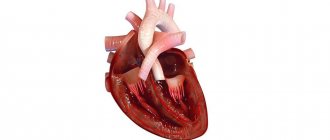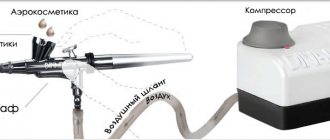Drug addiction is a painful condition caused by the use of psychoactive substances. A type of disease is substance abuse, in which substances that are not prohibited by law (gasoline, acetone, construction glue) are used as drugs. Treatment of drug addiction and substance abuse is a priority task of specialized drug treatment centers.
Who is at risk of taxi addiction?
Patients with chronic alcoholism who take medications or other drugs instead of alcohol to achieve a greater degree of intoxication. Youth and teenagers who use toxic drugs out of curiosity, boredom, and imitation. They inhale anything that smells strongly: gasoline, stain removers, glass cleaners. The hallucinations that arise in this case cause severe psychomotor agitation.
Toxic substances are strong poisons for the body. They affect the nervous system, kidneys, gastrointestinal tract, and motor centers of the brain. Having experienced the intoxication caused by these substances, alcoholics are no longer satisfied with alcohol intoxication, and after a while they become drug addicts. As a result, the personality quickly collapses.
Causes of drug addiction
The main causes of drug addiction and substance abuse can be divided into two large groups:
Physiological reasons
- diseases and conditions accompanied by insufficient production of natural neurotransmitters. In this case, the person experiences a constant feeling of anxiety and discomfort, which can be eliminated with the help of narcotic substances.
Psychological factors
consist of a feeling of dissatisfaction with life, the people around you, and work. In addition, signs of substance abuse and drug addiction are often detected in adolescents at the stage of “difficult” age. Their desire to try drugs is driven by curiosity and some kind of personal rebellion against society (“I don’t obey other people’s prohibitions”).
The current state of the problem of drug addiction and substance abuse is also due to the widespread propaganda of drugs in Western and some domestic films popular among young people. Often the main character does not mind smoking a marijuana cigarette or snorting cocaine.
The impact of substance abuse on health and consequences
What happens as a result of using toxic substances? Most often, a drug addict has a desire to chat, laugh, and a feeling comes that all troubles disappear, problems are solved by themselves. Various auditory and visual hallucinations appear, under the influence of which drug addicts sometimes jump from roofs, throw themselves under cars, and commit crimes.
However, the excitement lasts a short time, and then a state occurs in which severe headaches, dizziness, nausea, general weakness, lethargy, and a feeling of lack of air occur. All these are signs of brain damage, since a huge number of brain cells die.
Typically, physical development slows down in substance abusers, the skin has a characteristic gray color, and diseases of the lungs, heart, liver, brain, and nervous system occur.
Features of the problem
Substance abuse refers to the abuse of substances such as gasoline, glue, medications and solvents.
Sufferers inhale the vapors of these toxic substances, which causes a feeling of “high” and visual and auditory hallucinations.
In its clinical picture, substance abuse differs little from drug addiction. The attraction to such substances, as well as the consequences of taking them, are the same. There are differences only in the surfactants themselves and their features.
Teenagers are at risk for substance abuse. Various problems in the family and at school contribute to the search for a cheap way to solve difficulties. Teenagers often find it in glue, acetone and gasoline, which are sold at an affordable price in any area of the city or town.
Addiction to such substances develops quickly. The desire to achieve euphoria after just a few doses of psychoactive substances leads to psychological disorders, and later to physical symptoms of substance abuse. Rapid degradation of personality occurs, all functional systems of the body can be changed, and the person becomes completely dependent on taking the chosen cheap drug.
Signs and what a substance abuser looks like
The following signs serve as grounds to suspect substance abuse.
- A state of intoxication, in the assessment of which one should pay attention to a sudden rise in mood, confusion of consciousness.
- A characteristic feature of intoxication with a toxic substance is its rapid absorption into the blood. A drunk person emits a specific “chemical” smell.
- The appearance of a substance abuser gradually acquires characteristic features: premature aging, dullness and brittleness of nails and hair, absence of many teeth, exhaustion.
- It is necessary to pay attention to traces of intravenous injections, which are especially numerous in those who abuse certain medications.
- Substance abusers who abuse sleeping pills and sedatives are characterized by slow reactions, movements, speech, and brain activity.
- Substance abusers are characterized by mood swings with bouts of irritation, pickiness, aggression, and depression.
Varieties
Inhalation of toxic fumes can affect a teenager in different ways. Different organs and systems can take the brunt of the impact, and it can take varying amounts of time to achieve euphoria.
Substance abuse has several varieties. The most common abuses are:
- gasoline;
- glue;
- acetone and other solvents;
- pharmacological drugs;
- gas.
According to the results of numerous studies, medications are of greatest interest to teenagers today. Most of the pharmacological agents used to achieve a high are sold in every pharmacy. Such products are sold without a doctor's prescription. There is a ban only on some antispasmodics and codeine-containing drugs.
Pharmacological
When a teenager abuses pharmaceutical drugs, an unhealthy blush appears on his cheeks, he often suffers from apathy and can behave aggressively, especially during the period of abstinence. It is important for parents to remove the following medications from their home medicine cabinet:
- "Sigan";
- "Spazmalex";
- "Codterpin";
- "Spazmalex";
- "Solutan";
- "Oxygen."
Chronic drug abuse is characterized by a variety of symptoms. With extensive experience, adolescents may develop tremors of the limbs, allergic reactions to the skin and problems with coordination. You can even recognize a person who abuses medications by their gait. He hardly bends his legs when walking and always tries to keep his back straight.
Gasoline
The state of euphoria is ensured by toluene, benzene and xylene contained in gasoline. The addict quickly develops disturbances in biochemical processes in the nerve tissues. It will not be difficult to identify symptoms in a child. Side effects from inhaling gasoline vapors:
- headache;
- nausea and vomiting;
- lack of appetite;
- inhibition of reactions.
There are also changes in appearance. His eyelids become puffy and his skin becomes pale. His head is often dizzy, which affects the coordination of movements. These symptoms may not go away for 4 to 6 days.
Adhesive
It is difficult to identify a person who sniffs glue. It's all about the quickly disappearing symptoms of taking the next dose. The only side effects are dullness of the face, circles under the eyes, and nausea.
For the information of parents, the most harmful are adhesive compositions containing toluene. This toxic element quickly puts a person into a state of euphoria, he is lost in space and time. And due to the fact that the inhalation procedure itself is carried out under a plastic bag placed on the head, this can lead to death from suffocation.
Acetone
Acetone and other paint solvents have a strong poisoning effect. Euphoria in just 3-4 minutes can give way to headaches and vomiting. You can identify acetone lovers by the unhealthy appearance of their skin, as well as by swelling of the eyelid area and bridge of the nose. The smell of solvents is very pungent and intrusive, and rarely disappears even after several hours after use. It can also help identify someone suffering from substance abuse.
Gas
The abuse of gas is popularly called sniffing. This type of addiction is common among children 8-10 years old. The dangerous element is butane. Teenagers sniff the contents of gas cans, air fresheners and other aerosols. It is also important that sufferers manage not only to sniff such substances, but also to drink them.
This type of substance abuse is the most difficult to identify. Even if the child catches the eye of his parents, they may only notice signs of fatigue and lack of mood on his face. Bad breath and other symptoms are rarely detected.
Treatment of substance abuse
Treatment of patients with substance abuse is carried out in several stages in a drug treatment hospital, where doctors:
- relieve symptoms of intoxication and relieve withdrawal symptoms;
— restore impaired somatic functions;
— normalize mental state and suppress symptoms of mental dependence;
— carry out anti-relapse therapy and carry out rehabilitation measures.
During detoxification, along with generally accepted means (glucose, vitamins, blood substitutes), nootropic drugs are often used in large doses, and in severe cases, hemosorption, hemodialysis, and forced diuresis are indicated.
Biophysical (including reflexology and electrical stimulation), psychotherapeutic (psychocorrection, group and individual psychotherapy, etc.) treatment methods are also used in the treatment of substance abuse. Group discussions are held, during which a negative attitude towards the use of toxic substances is formed, and an understanding of the essence of substance abuse as a serious chronic disease is formed. In group psychotherapeutic sessions, behavioral reactions are practiced in situations associated with increased risk.
Family psychotherapy (restructuring relationships within the family) and long-term individual work of a psychologist with a patient, which involves creating motivation for a healthy lifestyle, are important.
The most popular and interesting materials:
Drug addiction prevention
Prevention of drug addiction and substance abuse should be carried out both at the state level and at the family level.
State prevention
At the state level, prevention is carried out in two directions:
- restricting the spread of drugs,
- decreasing popularity of drugs.
Activities under the first point are carried out by the legislative branch and internal affairs bodies. New psychoactive substances that are beginning to appear on the black market are added to the list of narcotic drugs, bans are introduced on the appearance of drugs in books and films, and penalties are established for the distribution of narcotic substances.
Measures to prevent drug addiction and substance abuse at the level of law enforcement agencies consist of timely catching and punishing people involved in drug distribution. In addition, the police children's rooms actively work with “difficult” teenagers and children. In some cases, it becomes necessary to influence the child’s parents.
Prevention at the family level
Prevention of drug addiction, substance abuse and alcoholism should primarily be carried out by the child’s parents, starting from a young age. The child must know for sure that psychoactive substances will not make him stronger or smarter, or allow him to rise above his peers. On the contrary, drugs will make him weak and infirm.
Schools should also teach about the dangers of drug addiction and substance abuse. It is better if such lectures are conducted using visual aids and photographs. At the same time, both teachers and parents should know the main signs of drug addiction and substance abuse, the presence of which in a child indicates the need to seek medical help.
Acetone poisoning in children
Parents should explain to their child from a very early age that acetone is a toxic substance that can cause severe poisoning if used improperly.
In children, acetone is absorbed into the blood much faster and spreads throughout the body. The rapid absorption of the toxic substance is due to the fact that the child’s heartbeat is faster, which is why the organs are supplied with blood more intensely. Metabolism in children is also much more intense. So, their health and sometimes their lives will depend on how quickly medical care is provided to young patients.
Acetone poisoning in children has more pronounced symptoms. The lethal dose per kilogram of a child’s weight is 2–3 milliliters. The most typical symptoms of dimethyl ketone poisoning in children:
- unsteadiness of gait and severe dizziness;
- severe weakness;
- dyspnea;
- pungent odor of acetone in exhaled air;
- ulceration of the oral mucosa;
- severe drowsiness, coma.
A rapid increase in drowsiness indicates a sharp drop in cardiac activity in children, and therefore requires urgent therapeutic measures.
Parents should remember a clear algorithm of actions in case of such poisoning.
- Call emergency medical assistance.
- Rinse the stomach with plenty of water. However, this should only be done if the child is conscious.
- Give the child any enterosorbent - activated carbon, Smecta, etc.
- In case of acetone vapor poisoning, it is very important to provide a supply of fresh air.
- If the poison gets on the skin, it should be washed with plenty of water.











